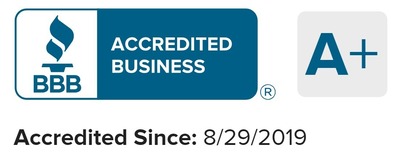Property investment is a journey filled with important decisions, and choosing the right tenant is at the heart of it all. According to the National Multifamily Housing Council, approximately 44 million rental units exist in the United States, and each lease represents a potential financial crossroads for property owners. Deciding whether to rent to a bankrupt tenant is not just a personal preference but a strategic decision requiring careful analysis and risk assessment.
A bankrupt tenant is an individual who has declared bankruptcy due to an inability to repay debts. However, it’s important to recognize that bankruptcy doesn’t always indicate an irresponsible tenant. It could signify a fresh start for someone who faced financial hardships like medical expenses or job loss.
In this article, I am clearing your puzzles of whether you should rent to a bankrupt tenant with the potential risks and benefits from my 20+ years of experience in property investment. This information will help you make an informed decision that best supports your goals. Let’s go on.
Key Considerations When Renting to a Bankrupt Tenants
1. Credit History and Financial Stability
Review the tenant’s credit report to assess their financial history post-bankruptcy. A bankruptcy can stay on a credit report for up to 10 years, but recent financial activity matters more. Post-bankruptcy, individuals often exhibit improved financial discipline. Look for consistent bill payments or evidence of stable income.
According to Experian, 65% of individuals with a discharged bankruptcy have no missed payments within a year of discharge. This suggests that many use bankruptcy as a fresh start and adopt better financial habits.
2. Employment and Income Stability
Verify current employment and income to ensure the tenant can meet rental obligations. Tenants with stable jobs and sufficient income are more interested in prioritizing rent payments. Ask for pay stubs, tax returns, or employer references to confirm employment duration and salary.
You can use the “30% rule,” where the tenant’s rent should not exceed 30% of their gross monthly income. For instance, if rent is $1,500, the tenant should earn at least $5,000 monthly.
3. References and Rental History
Contact previous landlords to understand the tenant’s rental history, including payment consistency and behavior. A positive rental history can outweigh concerns about bankruptcy. Tenants who consistently pay rent during financial difficulties demonstrate reliability. If a bankrupt tenant maintains a strong rental record, they may still be a lower-risk option than someone with frequent late payments.
Expert Tip: Contact at least two previous landlords to verify the tenant’s payment history and overall behavior.
4. Compliance with Legal Protections
Federal and state Fair Housing Laws prohibit discrimination based solely on a tenant’s bankruptcy status. To make fair decisions, you must rely on objective criteria, such as income, rental history, and credit behavior. Violating these laws leads to penalties, lawsuits, or damage to your reputation as a property owner.
Expert Tip: Consult a legal professional to draft clear rental policies that comply with federal and state regulations.
Additional Considerations When Renting to a Bankrupt Tenant
Below are detailed considerations to further reduce risks and ensure a positive landlord-tenant relationship.
1. Security Deposit
Requesting a higher security deposit can provide an additional layer of protection against potential financial risks, such as missed payments or property damage. However, this approach must comply with state and local laws, which often regulate the maximum allowable security deposit.
A higher deposit ensures you have some financial recourse if issues arise. It also shows the tenant’s commitment to the lease agreement and ability to save, reflecting their improved financial discipline.
Expert Tip:
- Clearly outline the purpose of the security deposit in the lease agreement, detailing when and how it may be used
- Verify the cosigner’s creditworthiness and legal obligations under the lease.
2. Lease Terms
Customizing the lease agreement to include clauses that address late payments or breaches can protect you as a landlord. These terms should be specific, enforceable, and compliant with local landlord-tenant laws.
Expert Tip: Consider offering a shorter lease term (e.g., six months) as a trial period, with the option to renew based on performance.
Benefits of Renting to a Bankrupt Tenant
1. Reduced Financial Obligations
Tenants emerging from bankruptcy often have fewer financial commitments due to discharged debts. This may free up more income for rent payments. For example, a tenant who had $20,000 in credit card debt discharged through Chapter 7 bankruptcy may now be able to allocate that money toward housing expenses.
2. Motivation to Rebuild Credit
Bankrupt individuals are often highly motivated to rebuild their credit and prove financial responsibility. Paying rent on time is one way they can achieve this goal. For example, a tenant may prioritize timely rent payments to demonstrate reliability to future creditors or landlords.
3. Longer Tenancy Potential
Bankrupt tenants may prefer stability and are less likely to risk eviction, as finding a new rental property could be challenging with a tarnished financial record.
Risks of Renting to a Bankrupt Tenant
1. Payment Uncertainty
Although bankruptcy can free up income, it does not guarantee financial stability. Unexpected expenses or poor budgeting may still lead to missed rent payments.
As an example, a tenant on a Chapter 13 repayment plan might struggle to balance repayment obligations with rent payments.
2. Limited Financial Recourse
If a bankrupt tenant defaults on rent, you have limited options to recoup losses. Bankruptcy laws often protect tenants from additional financial claims during and after the process.
3. Screening Challenges
Bankruptcy can overshadow other financial behaviors, such as chronic late payments or prior evictions, making it harder to assess the tenant’s overall reliability.
[Keep Learning: 7 Warning Signs of Bad Tenants]
Making the Final Decision
Deciding whether to rent your property to a bankrupt tenant is a complex decision influenced by your risk tolerance, property goals, and the tenant’s unique circumstances. While bankruptcy might raise red flags, it doesn’t necessarily indicate an irresponsible tenant. It’s also essential to be aware of potential issues that can arise in any rental situation, including those ‘Common Tenant Scams.’
By thoroughly assessing factors such as credit history, income stability, rental references, and legal compliance, you can make an informed choice that aligns with your property goals. A strategic, fair, and well-researched approach can help you balance potential risks with the rewards of securing a reliable tenant. Ultimately, the key is to remain open-minded while protecting your investment through clear policies and robust screening practices.
Feeling stuck with the tenants of your property? Partner with OKC Home Realty Services, a trusted property management expert in Oklahoma City. We offer complete background investigations and provide legal assistance so that your investment is protected. Contact us today to learn more about our personalized solutions for landlords!
Disclaimer: This guide provides general information and should not substitute professional legal or financial advice. Always consult with local real estate attorneys and financial professionals for personalized guidance.

Author
Scott Nachatilo is an investor, property manager and owner of OKC Home Realty Services – one of the best property management companies in Oklahoma City. His mission is to help landlords and real estate investors to manage their property in Oklahoma.
 (
(









